Portable air conditioners use a fan to absorb hot air, while a refrigerant cools the air and blows it into your room. An exhaust hose drains the excess heat out with portable air conditioners available as single-hose or dual-hose models.
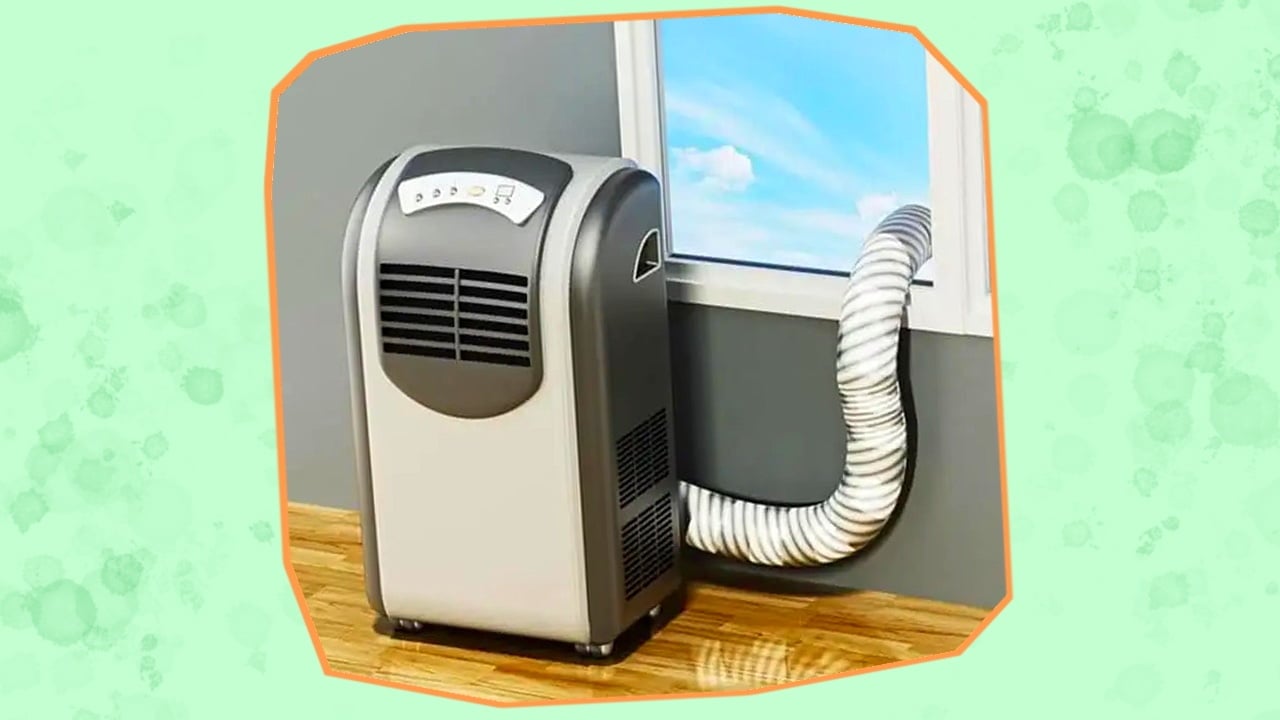
Portable air conditioners bring all the benefits of air conditioning in a compact, easy-to-move unit that eliminates the need to commit to a more permanent setup. These portable units are preferred by people who need the convenience of swift cooling in the hot summer months.
But how do portable air conditioners work? Today I’ll look at the parts and internal mechanism of a portable air conditioner to help you.
Components Of Portable Air Conditioners
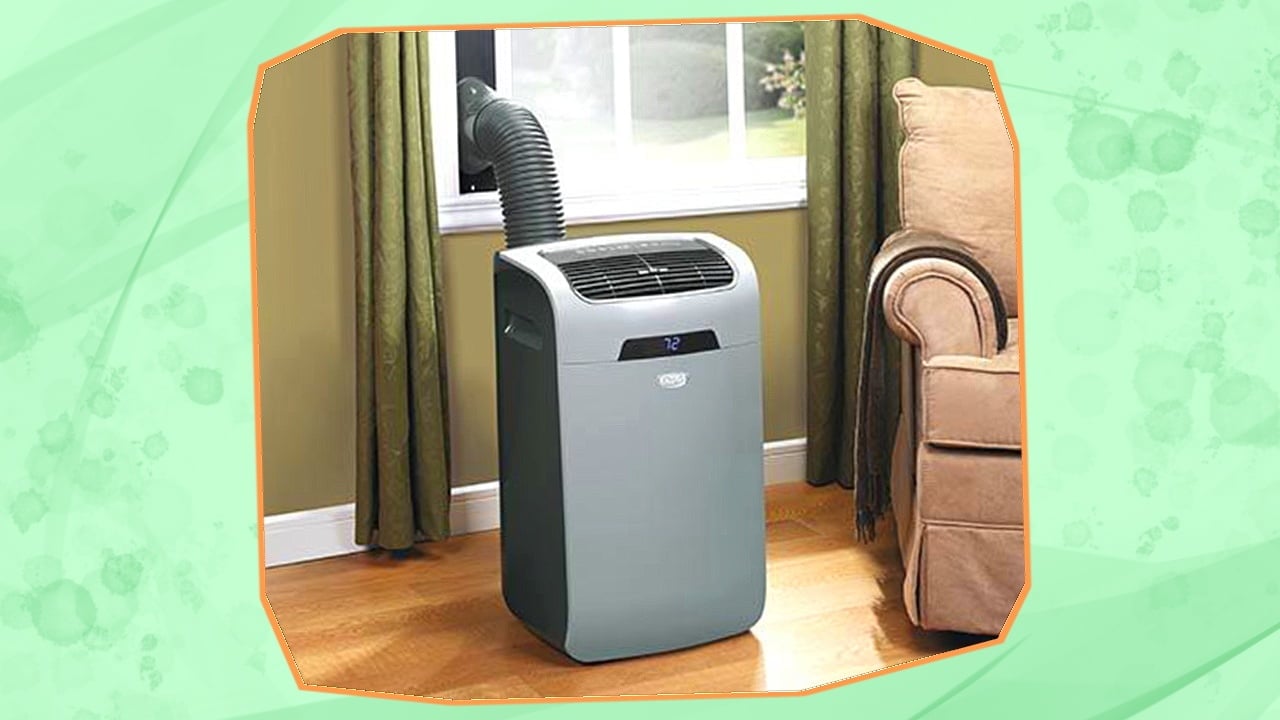
1. Fan
A portable air conditioner fan pulls hot air into the unit but you might need clarification on how this happens, as we're not generally used to fans working this way. To you, a fan's primary function is to blow air directly at you, whether it's a table fan or a ceiling fan.
But imagine standing behind a table fan. In this case, the blades pull the air away from your surroundings, blowing all of it in one direction. This is how a portable AC fan works, except it blows the air from outside the unit into it.
The fan blades are bent in a specific shape, making it scoop the air and push it forward to the other side. As this air is scooped away, it creates a vacuum, and the surrounding air rushes in to fill up the vacant space.
Now the rotating fan blades pull in this air again. And this mechanism continues at high speeds so that your portable AC units constantly pull in the hot indoor air from your space, and more air fills the gap it left behind. As it keeps replacing the indoor air with cold winds, the overall temperature lowers further and further in a steady flow.
2. Compressor
A portable air conditioner compressor consists of the following parts.
- Refrigerant tank
- Valve
- Motor
- Pump
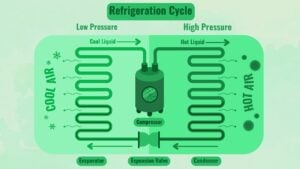
The compressor applies pressure to the coolant to reduce its volume. Meanwhile, the motor pushes the refrigerant fluid through the input valve and into the pump, with the compressor motion or mechanism reducing the amount of space in the pump. This decreases the coolant size, making it release heat and grow cold.
You must have seen water increase in volume and spill over the sides of a vessel when you boil it. Thus, increasing its volume makes it grow hotter and it draws in more energy from the air.
Conversely, squeezing the coolant into a tiny space makes its molecules lose all their energy so they can exist close to each other without colliding frequently. Thus, it turns frigid and after cooling the refrigerant, the compressor uses more valves to pass it into the condenser coil.
3. Condenser Coil
Your portable air conditioner condenser coil is made of a highly conductive material, which can be copper or aluminum, with the latter being more corrosion-resistant. However, conductivity is necessary because it needs to transfer heat from your room's air to the refrigerant without wasting too much of it.
The hot air blown into your unit by the fan is now passed over the condenser coil, which contains the coolant from before. Following the laws of heat transfer, the air cools down while the refrigerant heats back up.
Apart from being conductive, the condenser needs to have a large enough surface area to cool more air faster. This helps the portable AC units cool your room more quickly and effectively to a greater extent with lesser electric power.
Also, cooling air makes the vapor turn back to water, which collects on your condenser coil. If too much of it is present on your coil, it can lead to clogging and rust. So, portable air conditioners usually have some mechanism to collect it in an internal bucket or drain it.
4. Refrigerant
The refrigerant is a fluid (gas or liquid) that helps your portable air conditioner cool the indoor air. It has to be a chemical that can cool the most with the least pressure because that makes an air conditioner more efficient. It also improves the durability of the portable air conditioners because there is less mechanical stress on the interiors when the compression is less.
A coolant must be designed for maximum energy loss with minimum compression. In the past, air conditioner manufacturers thought chlorofluorocarbons (CFCs) would be the solution. However, research revealed that the free ions released by these CFCs destroyed our ozone layer and increased the risk of skin cancer. They were subsequently outlawed in the 1990s.
Since then, scientists have manufactured various new coolants that are up to the job. Hydrochlorofluorocarbons or freons are less harmful to the ozone layer but they still lead to global warming. Furthermore, the goal is to eliminate ozone depletion completely and not just reduce it a little, so HCFCs are rare in newer and improved portable air conditioner models.
Nowadays, most portable air conditioners use hydrofluorocarbons or hydrocarbons. HFCs lack chlorine, are more sustainable, and they are the most common refrigerant you'll find in the market. Hydrocarbon coolants are a recent development and are utterly free of fluorine, but they have the disadvantage of being completely organic and highly flammable.
Choose wisely, especially if you live in an area prone to deadly voltage fluctuations.
5. Exhaust Hose
As mentioned before, the refrigerant releases as much heat as it cools down. This heat needs to be drawn away from your room or it'll warm up the air again and negate any cooling from the air conditioner. This is where the exhaust hose prove useful.
You'll understand the setup of the hose while installing your portable air conditioner. Typically, it's a wide pipe with one end connected to the interiors of your unit, close to the compression chamber. You have to direct the other end of the pipe out of the room so that it leads to the exterior of your building and doesn't leak air back into your room.
Also, you should ensure that this pipe isn't near flammable objects and doesn't blow hot air into another living space. Basically, you have to treat it like a drain pipe that should only lead out of your home or office.
Tip
The exhaust pipe can act as an AC vent for hot air but cannot channel the heat out on its own. To do this, your portable air conditioner allows the heat to warm up the air already inside the large hose. Then, a fan or valve forces the exhaust air to flow through the hose before getting ejected outside your house.
How Do Single-Hose Portable Air Conditioners Work?
A single-hose portable air conditioner has all the above mentioned components, including a single, large exhaust hose. This makes it simple to manufacture and install, saving time and money during the initial steps.
Naturally, this type of portable air conditioner is the most in demand. Single-hose portable air conditioners pull in the warm air from your room, cool it, and exhaust the heat and condensed water outside.
However, the appliance only pulls in your room air to deliver the necessary cooling. This creates a lack of air in your room and a difference in air pressure with the surroundings, which is known as negative pressure.
To stabilize the negative pressure again, hot air from outside or the other rooms will flow in through the cracks around your windows or under your doors. This has an overall reduced impact on the cooling.
Also, the exhaust hose tends to heat up as it pushes the hot air outside, which makes your room heat up further. Children or pets risk burns if they get too close to your portable unit.
There are ways to counter these issues and you can seal the unnecessary gaps in your doors and windows to prevent hot airflow. However, this will require you to turn off your AC and ventilate your room a few times daily so that you don't feel suffocated.
You can even cover the exhaust hose with high-quality insulating material to prevent overheating, so the excess heat will just flow outside.
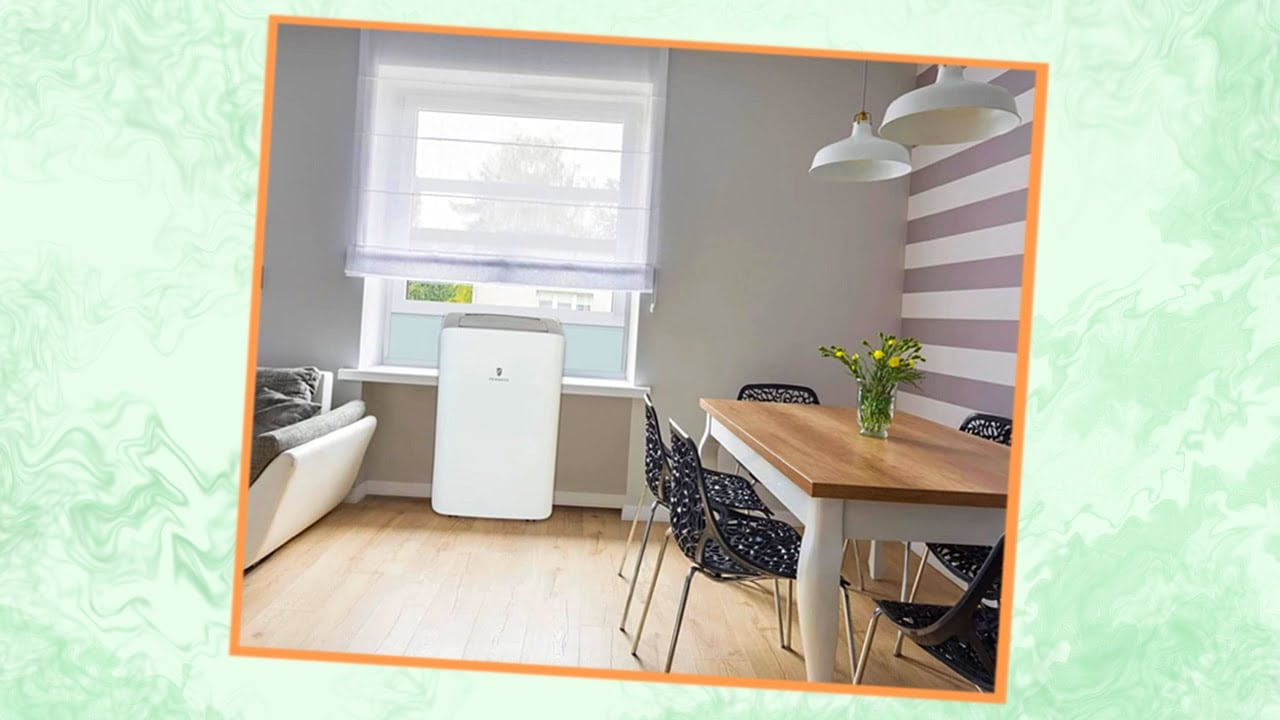
How Do Dual Hose Portable Air Conditioners Work?
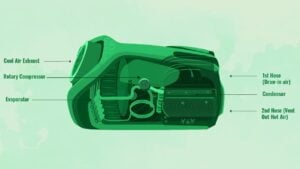
As the name implies, a dual-hose portable air conditioner has two pipes attached. One of them pulls in hot air from the outside and cools it using the compressor and condenser coil inside the unit. Then, this cold air blows into your room while the heat flows through the exhaust hose.
Dual-hose portable air conditioners are more complicated, and they cost more as a result. They are also more challenging to set up, and you might go through a learning curve at the start. The two large pipes make the portable air conditioners bulkier, and you'll find fewer spaces in your building where it can fit.
However, these disadvantages are overcome by the massive energy efficiency of dual hose units. Since they use hot outdoor air, they provide your room with a healthier circulation of fresh air and avoid creating negative pressure.
Even if it's sunny outside or the room next to yours is hot, the warm air won't seep into your space through cracks because your room isn't losing any of its indoor air.
Since your air conditioner has to cool less, it saves electricity, and you can cool a larger space with a model having a lower British Thermal Units (BTU) rating. This gives such units an advantage over a single-hose air conditioner.
Moreover, this leads to the exhaust hose having less heat to transfer, eliminating overheating problems. Your room has a consistent supply of oxygen-rich fresh air from outside, which prevents headaches and stuffiness to improves the indoor air quality.
When Should You Choose A Portable Air Conditioner?
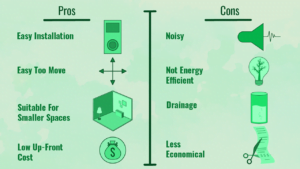
Now that you know how a portable air conditioner works, you can be more decisive about whether to get a portable air conditioner and how to heat your space in winter. However, other factors may affect your decision, and below are certain scenarios that may or may not apply to you.
A portable air conditioner will be best for your home or office if you relate to any of these.
1. You're Renting Or Sharing Your Space
Suppose you're moving into a new university dorm room, signing a contract with a strict landlord, or renting a local office for your small business. In such cases, you'd need air conditioning in the summer, but installing a unit in the walls or windows might not be up to you.
Split units, especially, require you to make changes to the walls, like drilling holes or making space for the external unit. Additionally, window air conditioners need proper permission, which may be an unpleasant experience for some.
If this applies to you, a portable air conditioner might be your best option. The only installation it needs is a drain hose space, and you can just keep it on your room floor.
2. You Have A Strict Homeowners Association
Some communities have a strict HOA that puts a lot of restrictions on what you can do to your house. For example, some scenic or historic tourism communities prevent you from hanging visible windows or split units on the exterior of your home because they affect the neighborhood's aesthetics.
Also, some condo communities have strict rules about changing the walls or windows because the residents tend to be temporary, and the owners don't want permanent changes to the buildings. Thus, installing a large air conditioner will be a stressful process that can be avoided by simply using a portable air conditioner.
3. Your Windows Aren't Up To The Mark
The windows in old houses weren't built with air conditioners in mind, so they are of inconvenient sizes and shapes. Further, they might not be structurally strong enough to support the weight of your unit.
Also, the windows might sometimes be placed too high or too close to your neighbors' windows. This makes the installation complicated, and your neighbors might complain about the noises or heat from your window air conditioner.
However, a portable air conditioner is worth it for all these cases because it just needs an outlet from its hose(s). Pipes are easier to install, and you can direct them away from other people's homes.
4. Your Occupation Makes You Shift Frequently
If you have a transferable job or need to travel often and for long durations, a split or window air conditioner might just increase the hassle. You'll need to get it dismantled, carried to a new location, and reinstalled every time you shift locations.
By design, a portable air conditioner is good for travel and frequent shifts. It's built to be compact and easy to carry from place to place, while installation is a breeze. You'll also save money on technical assistance every time you move.
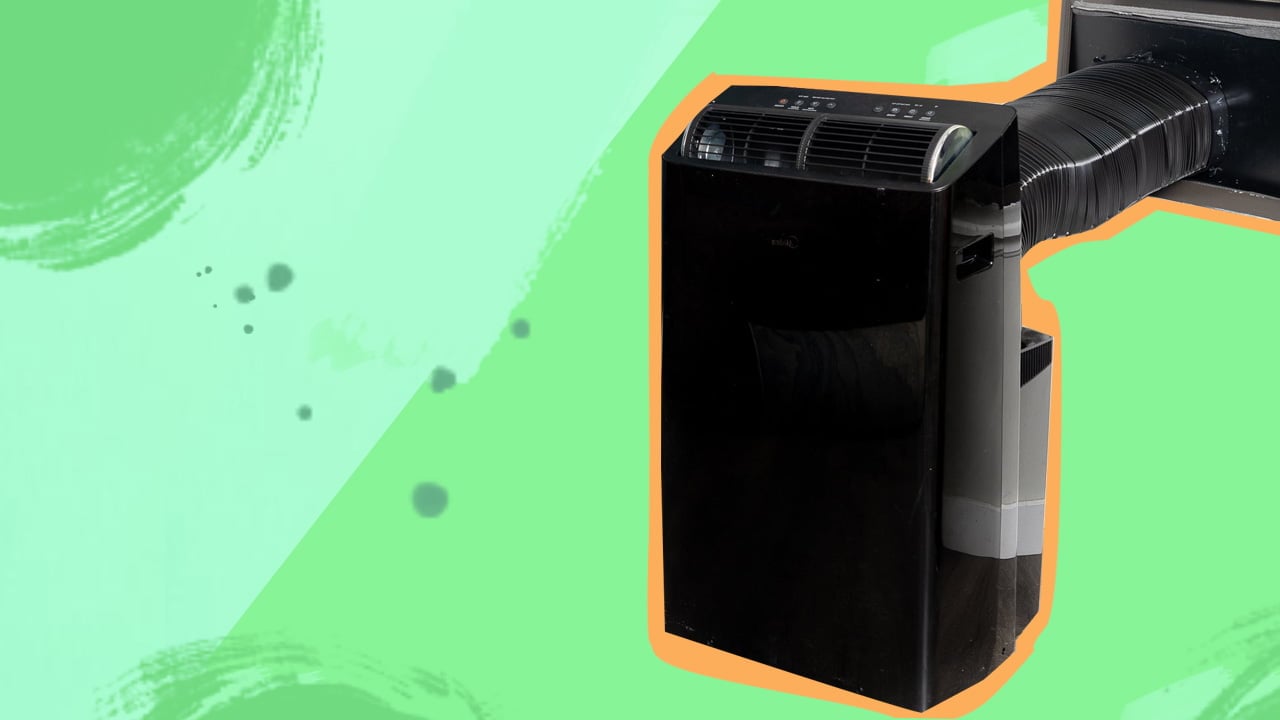
How To Keep Portable Air Conditioners Clean And Functional
Choosing and installing a portable air conditioner is simple and quick, but you must maintain it regularly. This will help it function efficiently and stay in good condition for a long time while saving on your power consumption.
Below are some tips to properly maintain your portable air conditioner.
1. Keep The Filters Clean
You must already be aware that air conditioners of all types require you to clean their filters regularly. It can be weekly, bimonthly, or monthly, depending on the instructions for your specific portable air conditioner model.
Usually, modern portable air conditioners make it easy for you to remove the filters. Then, just hold it under gently running water and let the dirt and debris wash away before keeping your filter out to dry in a windy area. It only takes a few minutes, but it's essential to ensure the filters are completely dry before you fix them back into portable air conditioners.
2. Maintain The Exterior
Over time, the outer coating of your air conditioner gathers dirty stains and water deposits due to regular use and handling. Removing these occasionally will make your portable unit more durable in the long run and keep it functioning at optimum capacity.
For this, mix mild soap with room-temperature water and gently wipe down your portable air conditioner. It's best not to use warm water because the exterior is usually plastic and might not react well to the heat.
After washing it with soap, wipe it with a clean washcloth to remove the remaining marks. You can perform this cleaning once a month or whenever you see dust build up on the portable air conditioners.
3. Drain The Water
Portable air conditioners collect condensed humidity from the air. If your portable AC unit has an internal tank to collect this moisture, you should drain it regularly so that it doesn't spill over and damage the rest of your portable AC unit.
The standing water will also give off an unpleasant smell if you leave it in for too long. But how often you need to drain this tank depends on the particular model and your usage.
After using a new portable air conditioner for a few weeks, you'll get the hang of the portable air conditioner maintenance and be able to predict when to drain it. Certain newer models have inbuilt functions, like an evaporator, that reduce the times you need to perform manual drainage.
4. Keep An Eye On The Condenser Coil
Condenser coils are prone to gathering rust because they're responsible for moisture condensation. Even if your portable AC unit has specific mechanisms to drain moisture from the humid air, some will remain on the metal coil and collect on it over time.
You should check the condenser coil regularly and ensure it's clean, so consult your user manual to know where to find the coil. If you see water or dust has collected on it, use a soft brush or cloth to wipe the coil when the portable AC unit is switched off and unplugged.
5. Keep The Hose Clean And Safe
The drain hose is one part of your portable air conditioner you may forget to clean, and a lot of dirt and moisture can potentially collect in this component. Further, the hoses are likely to be hot when they function, which might cause problems, like foul smell, if dirt collects in there and burns with the heat.
You'll need to remove and clean the pipes at least once a month. A mixture of equal parts water and vinegar is the best solution because you can run it through the hose and let it dissolve the dirt. Also, it removes both dry and greasy dirt, so you don't have to brush the internal surface.
But remember that hoses are at risk of physical damage, so handle them carefully when you move your portable AC unit. You can find a good shock-absorbing, heat-resistant cover for the pipes, so wrap them in it for extra safety. You also need to ensure that excessive heat doesn't damage the material of the hose.
6. Insulate Your Space
If your room or office isn't properly insulated, your portable air conditioning units will constantly fight the outside heat and the hot air that seeps in. This will lead to higher monthly bills and reduce the lifespan of your unit by making it work overtime.
Seal all the air gaps between your room and its exteriors. If your doors have significant gaps that are difficult to close permanently, you can just add newspapers or bedsheets under them when the portable AC is running.
Also, get thick, insulating curtains and shades for your windows in the scorching summers. This will help your portable air conditioning units function at their maximum efficiency.
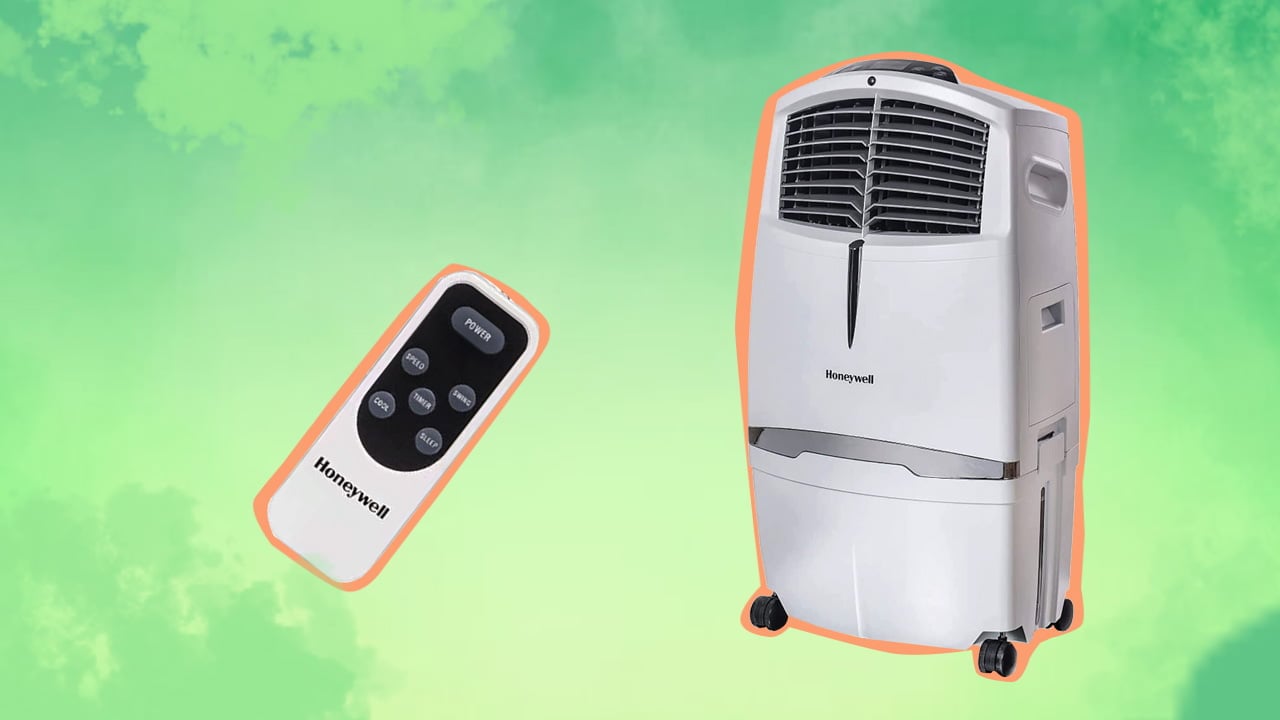
Final Thoughts
Portable air conditioning units use a fan and a coolant to draw in hot air, cool it, and then fill your space with cool air to achieve the desired temperature. Moreover, a portable AC is easy to install, detach, and carry from place to place.
But the unique design of portable AC units also lends them some disadvantages, like higher noise levels and proneness to overheating. Thus, you should only opt for such units if you're ready to overcome the cons and believe they won't bother you.
Overall, the design of portable AC units prioritizes ease of use and quick cooling. You can have efficient and convenient cooling anywhere and anytime with proper care and maintenance of your portable AC.
